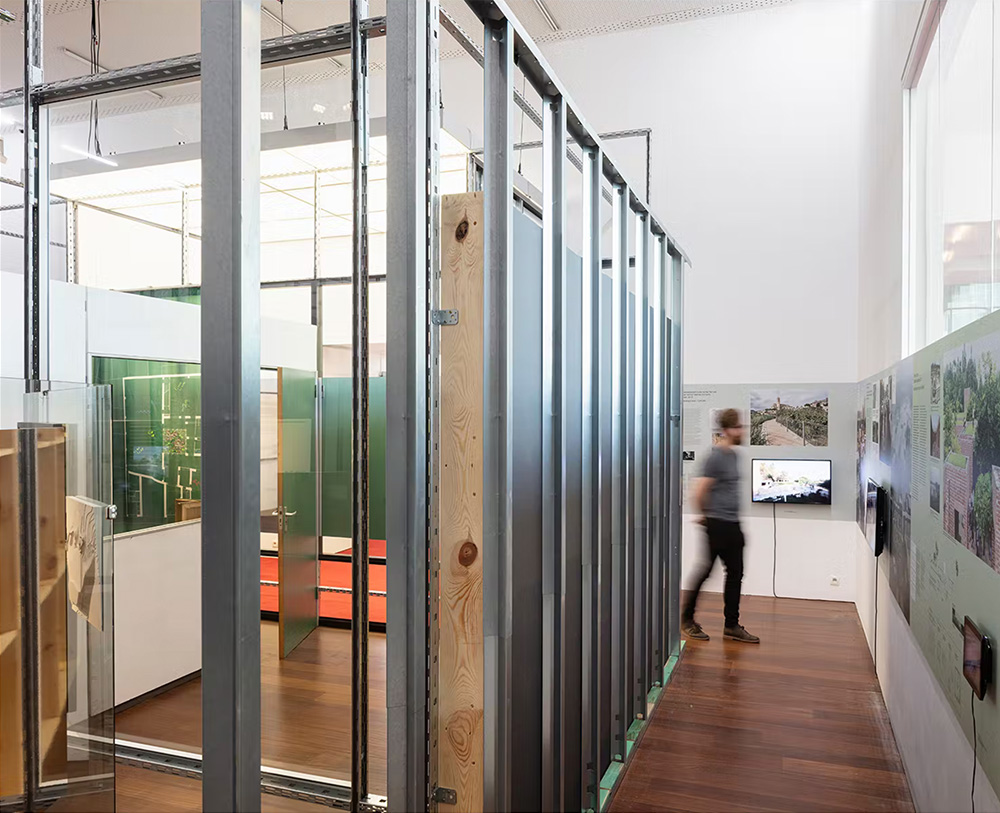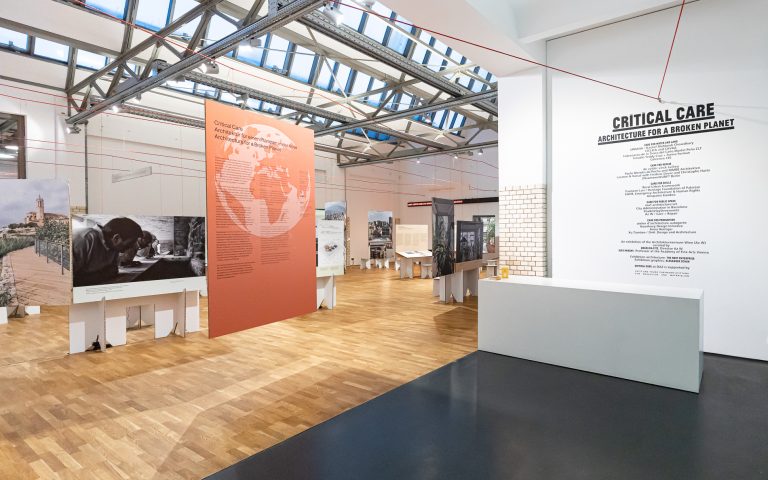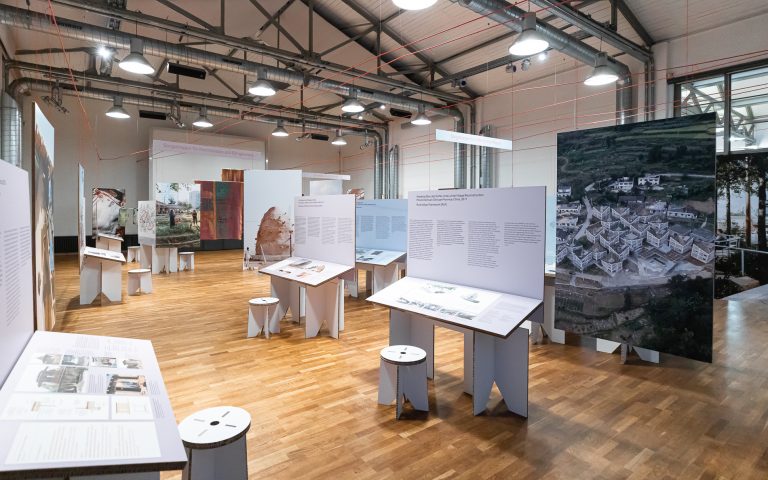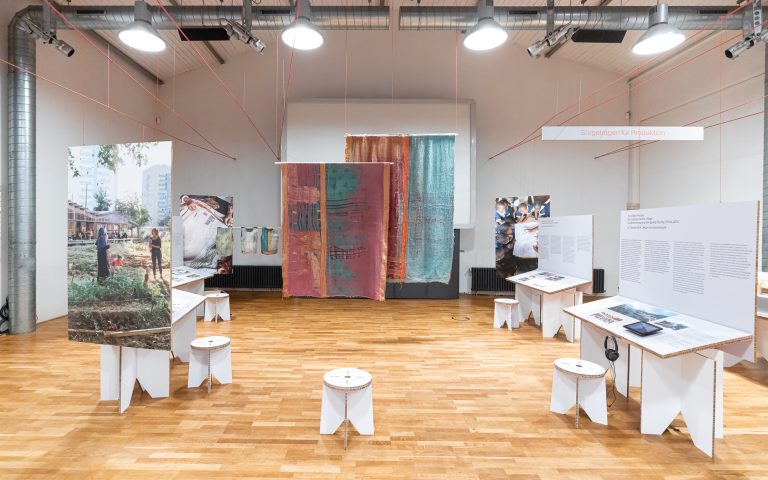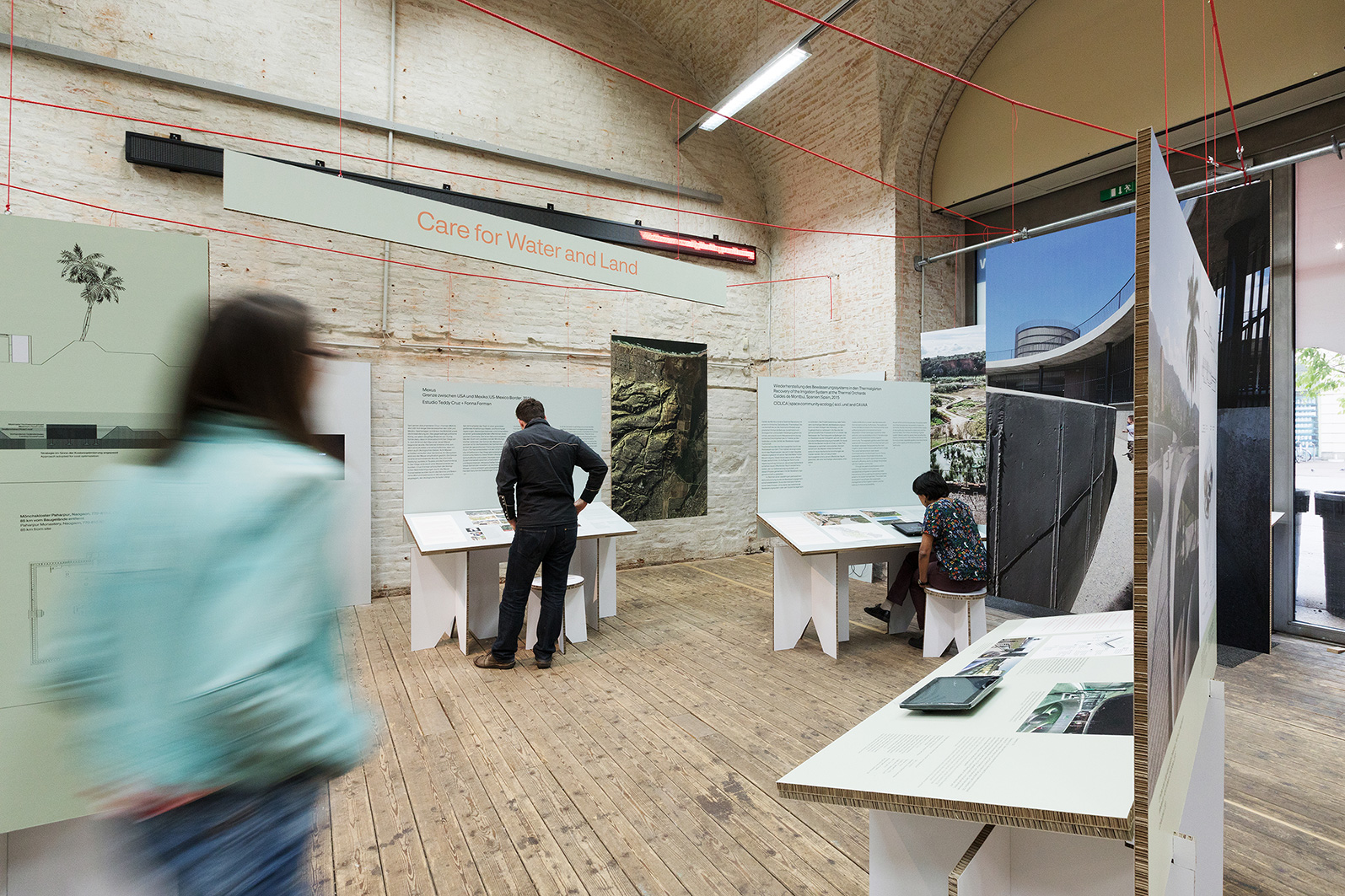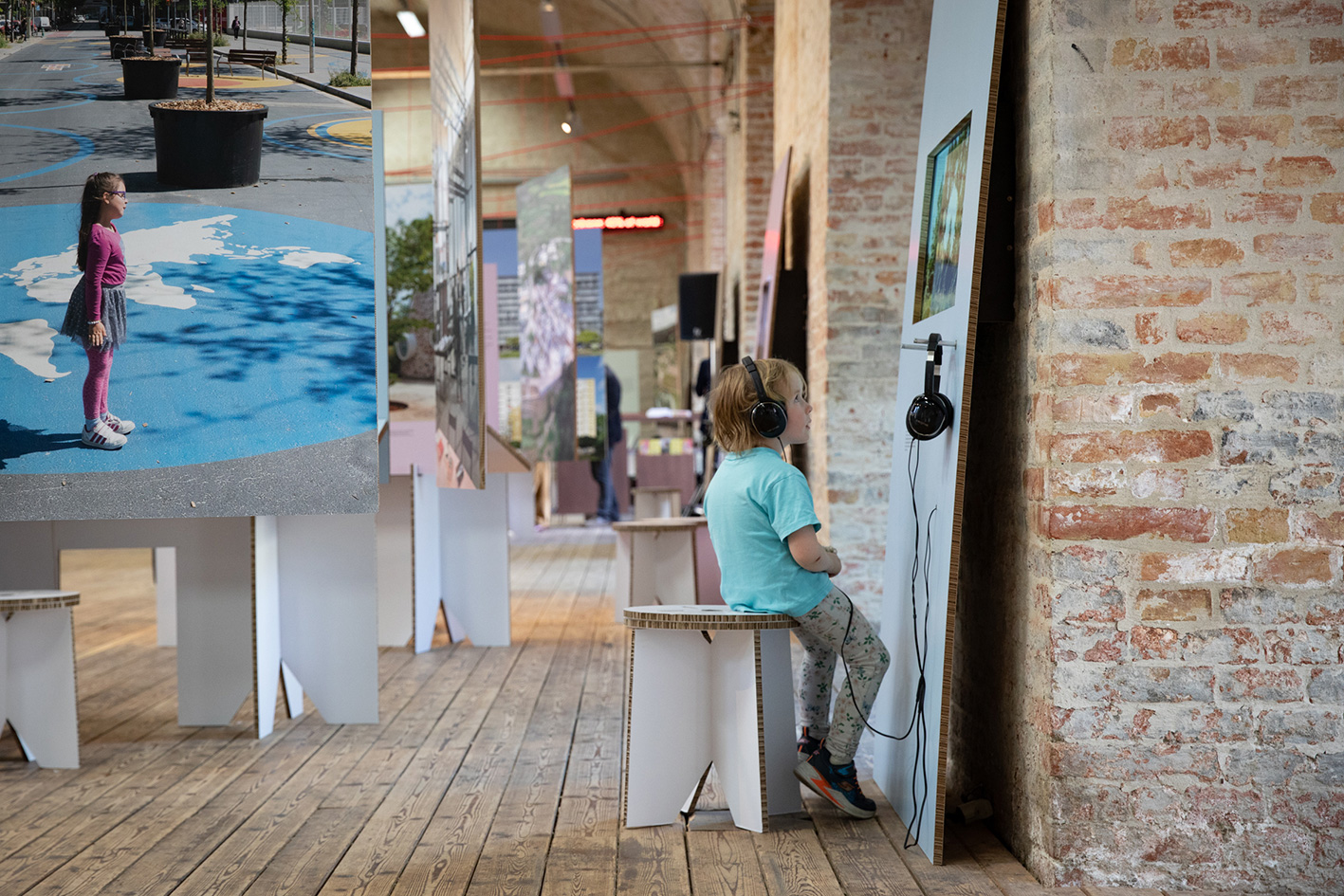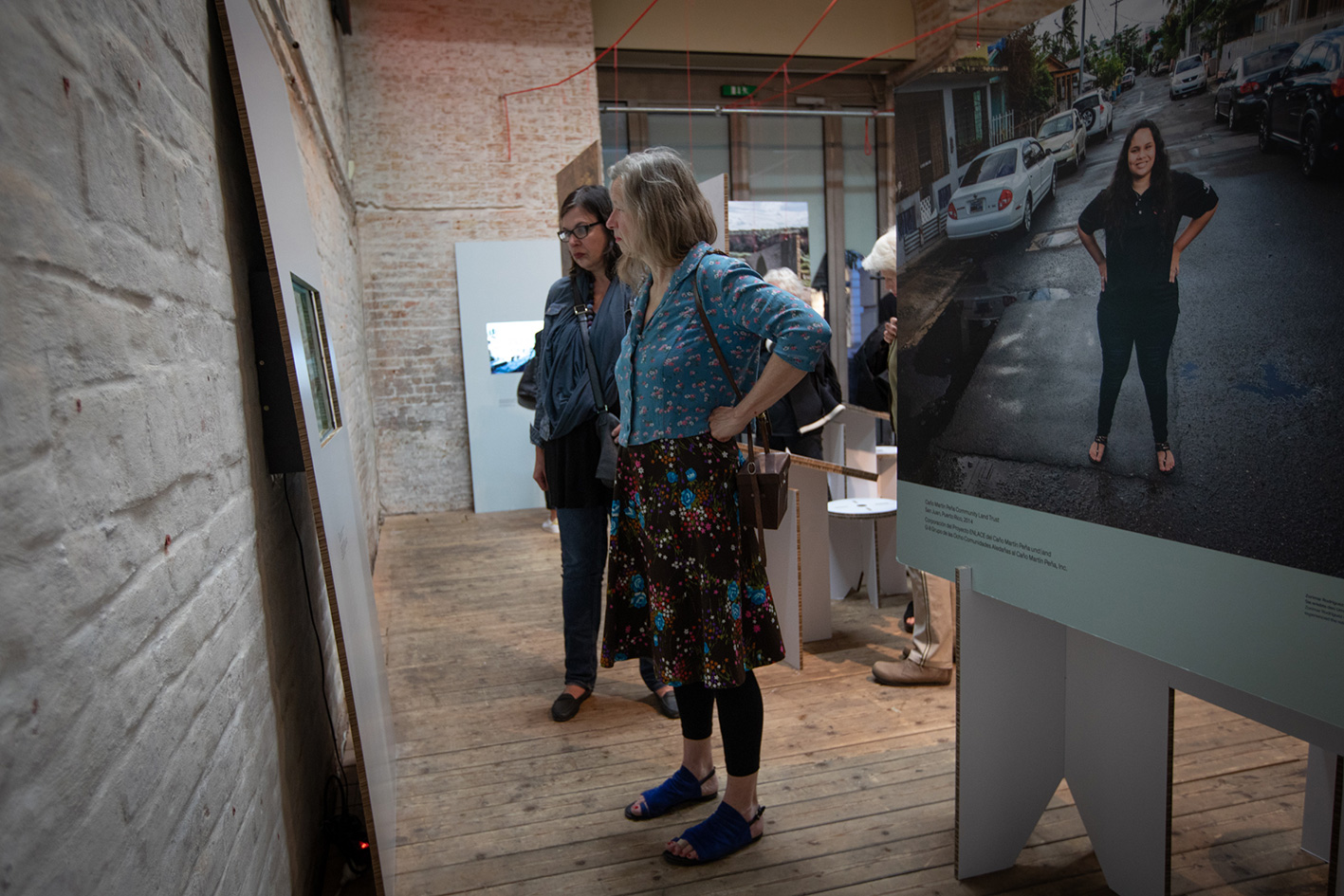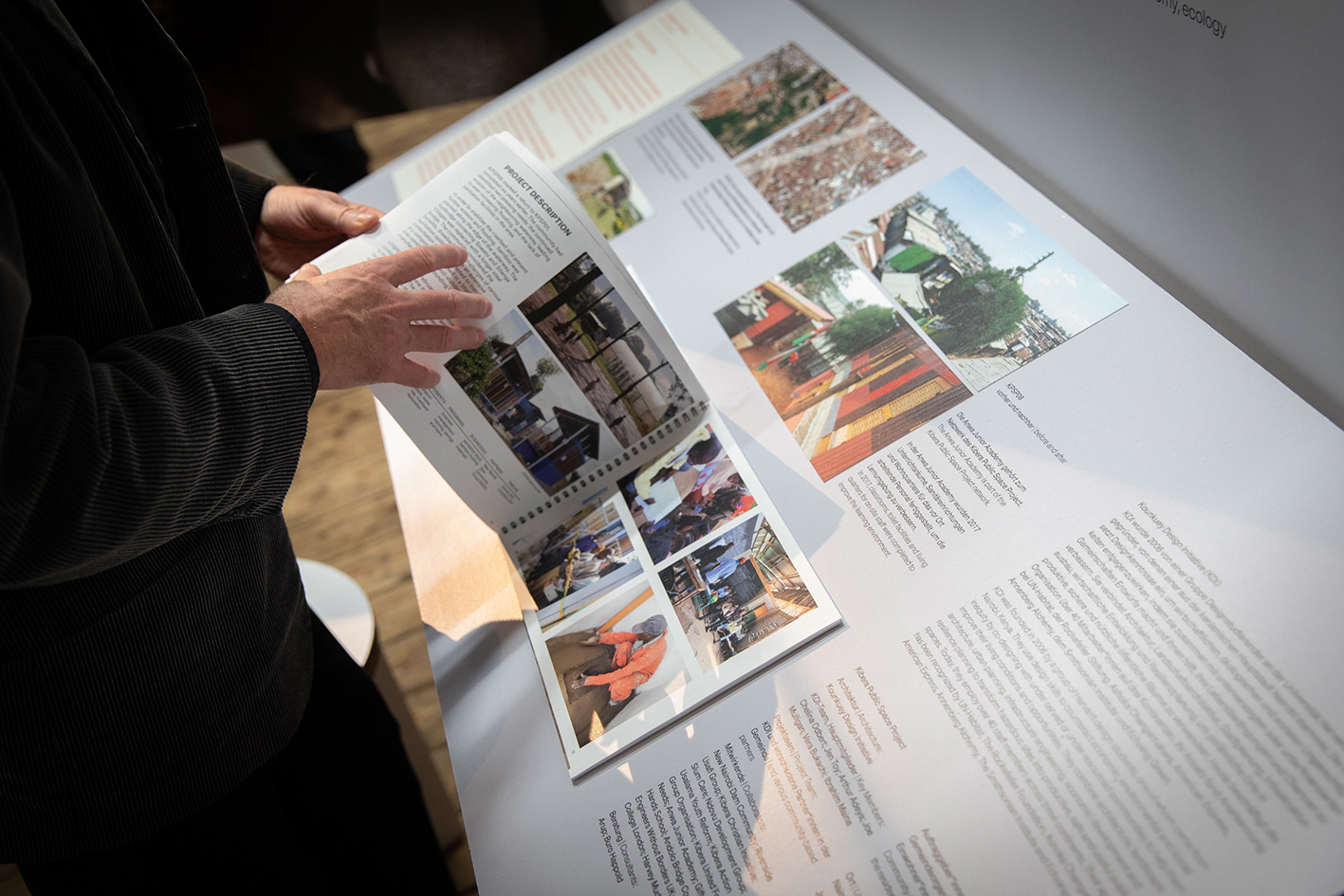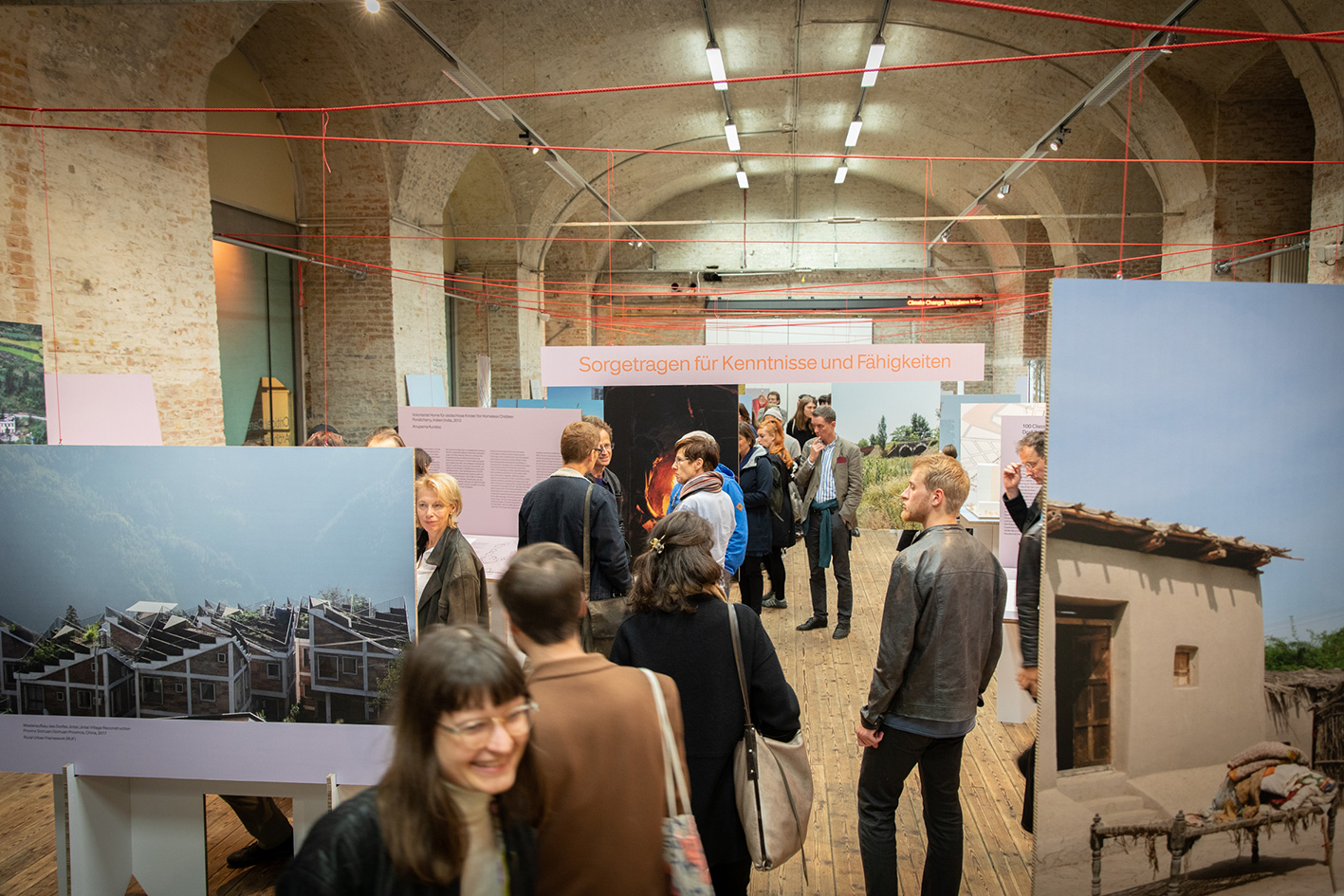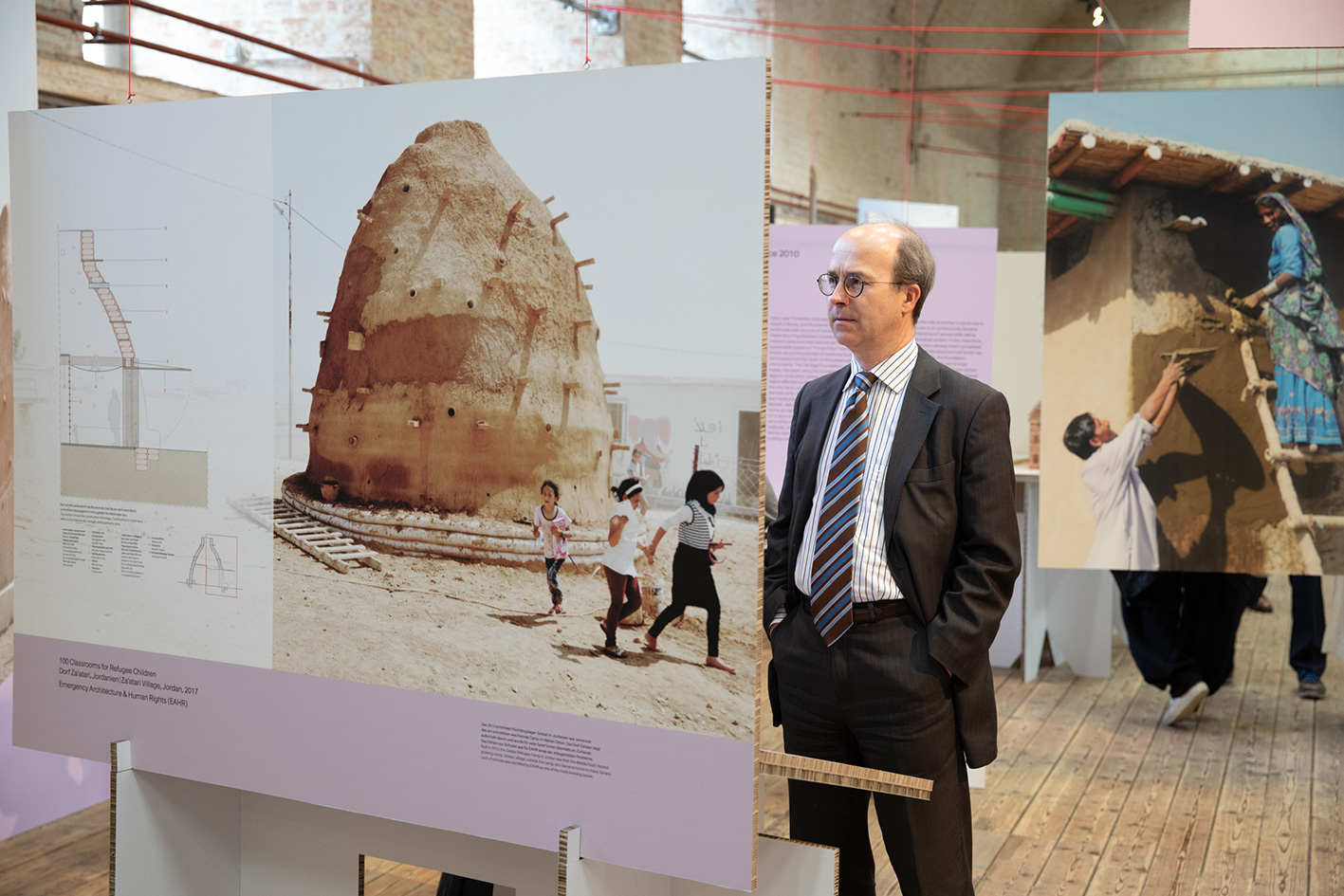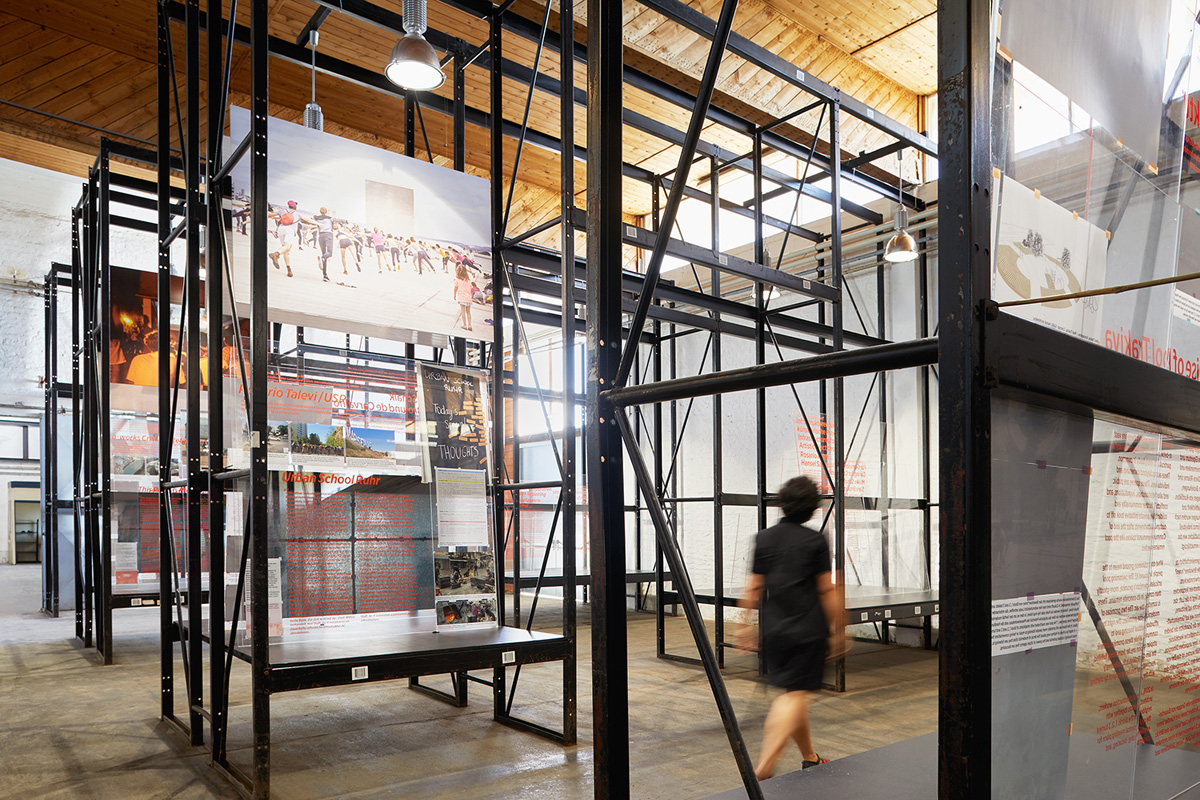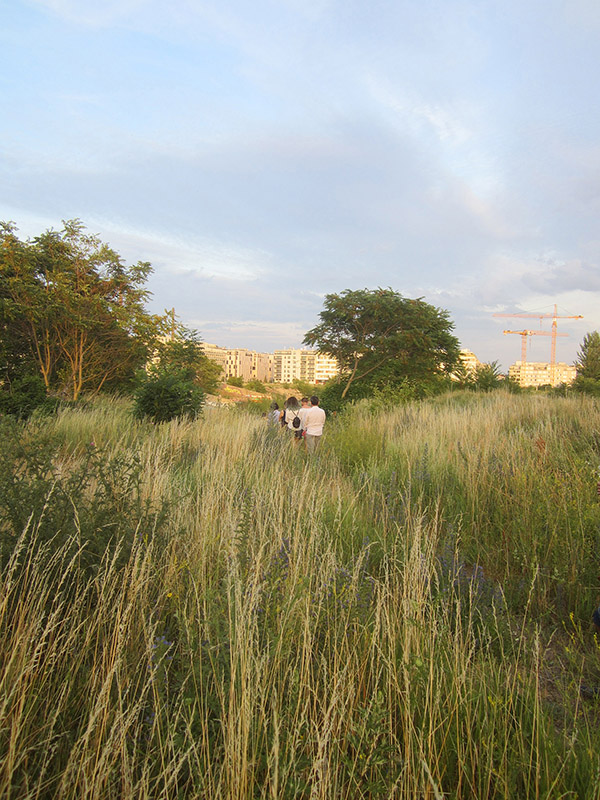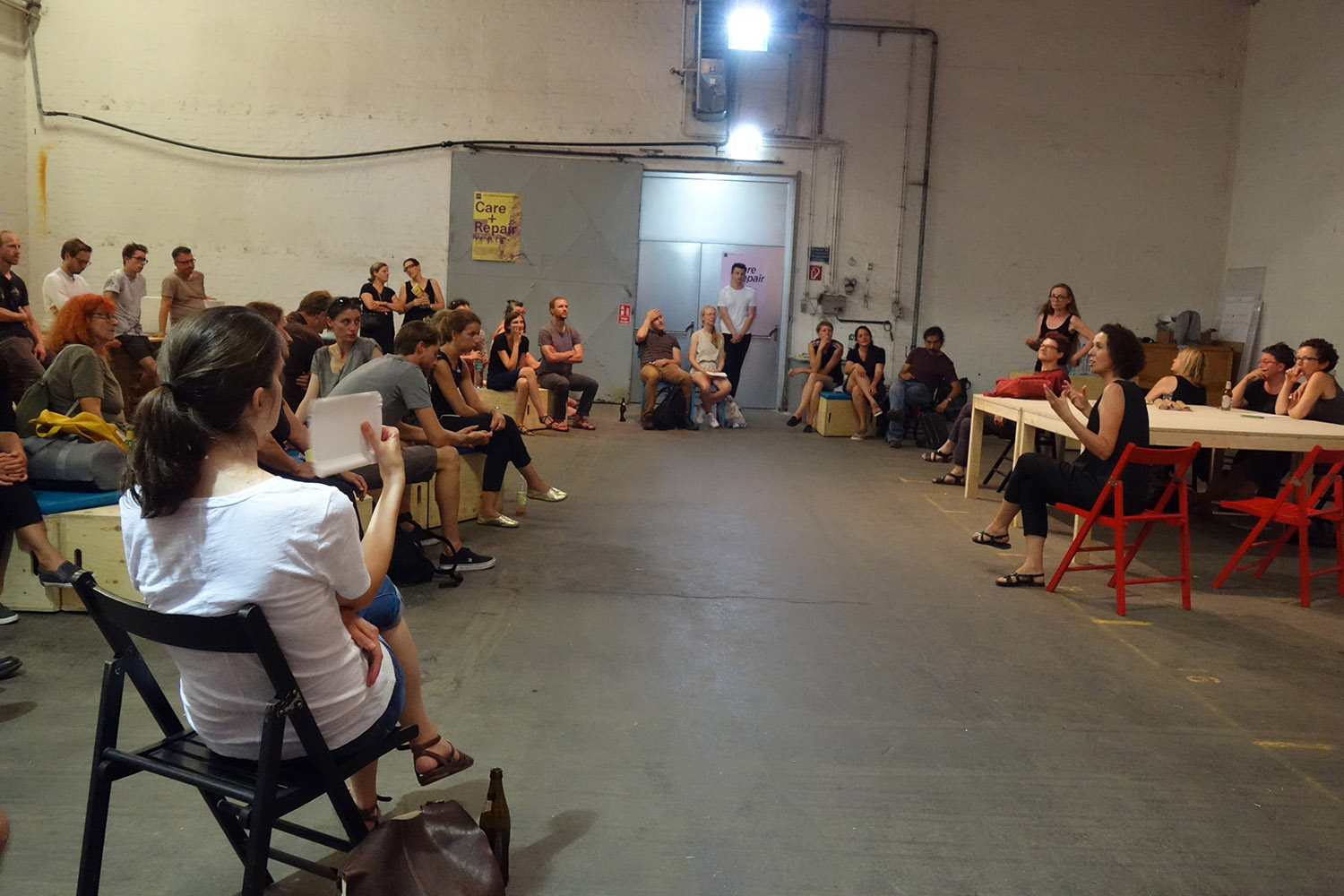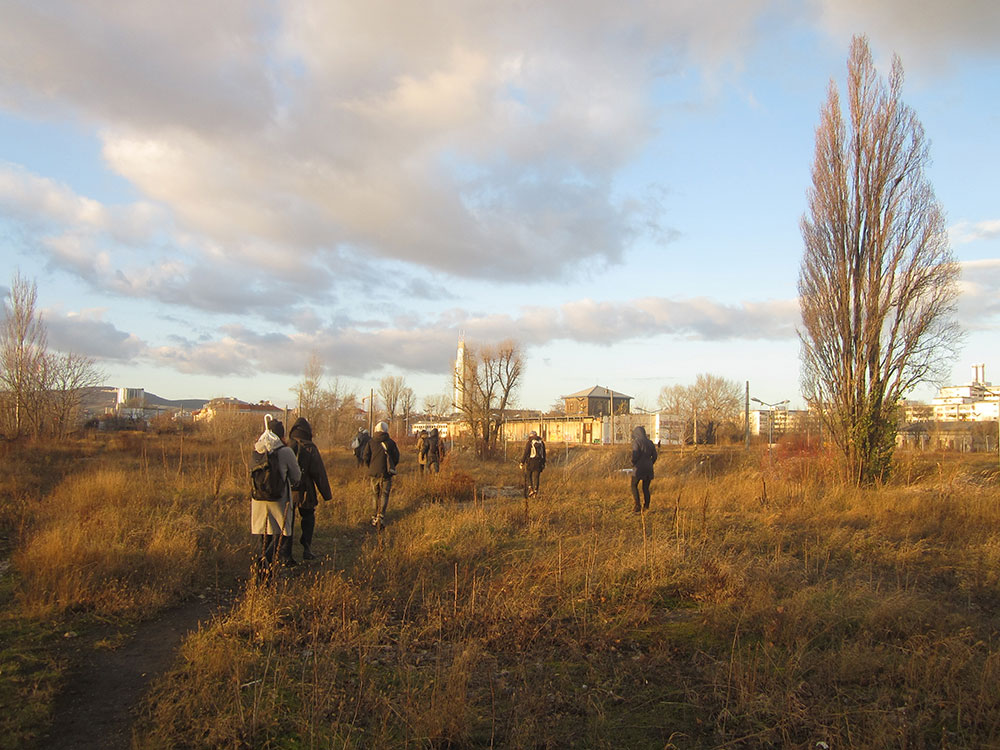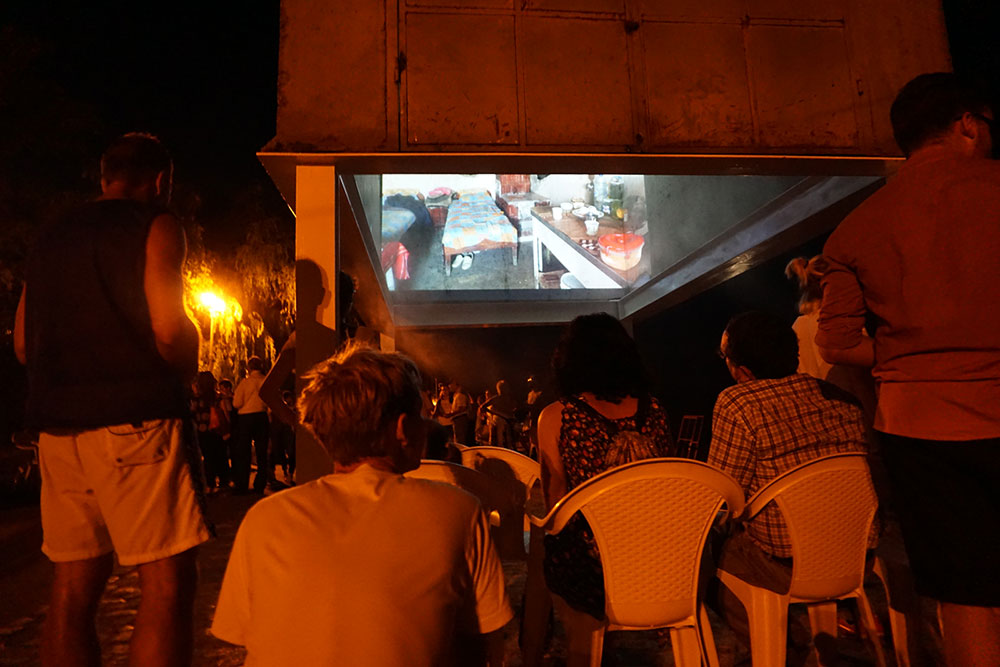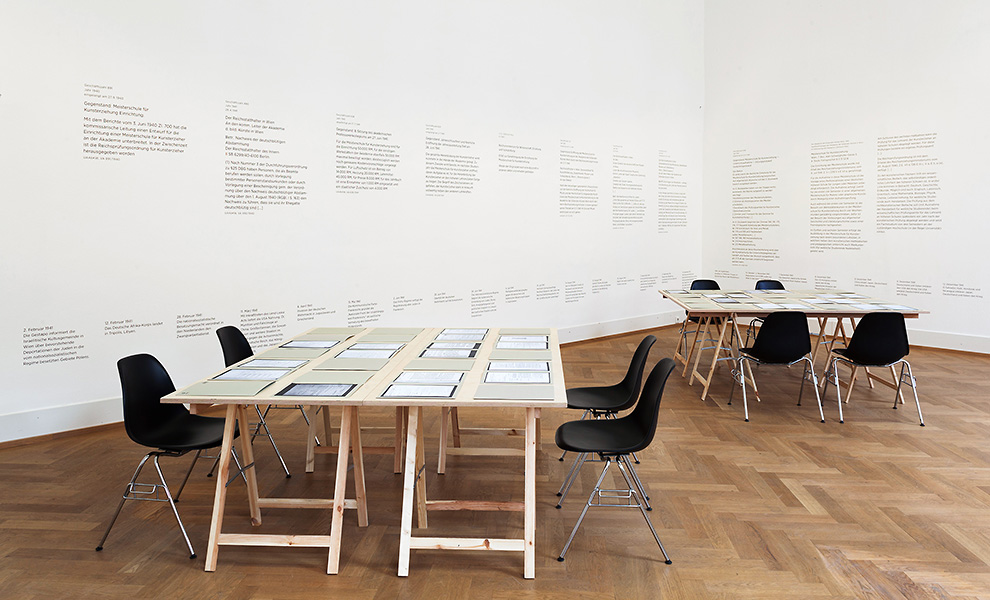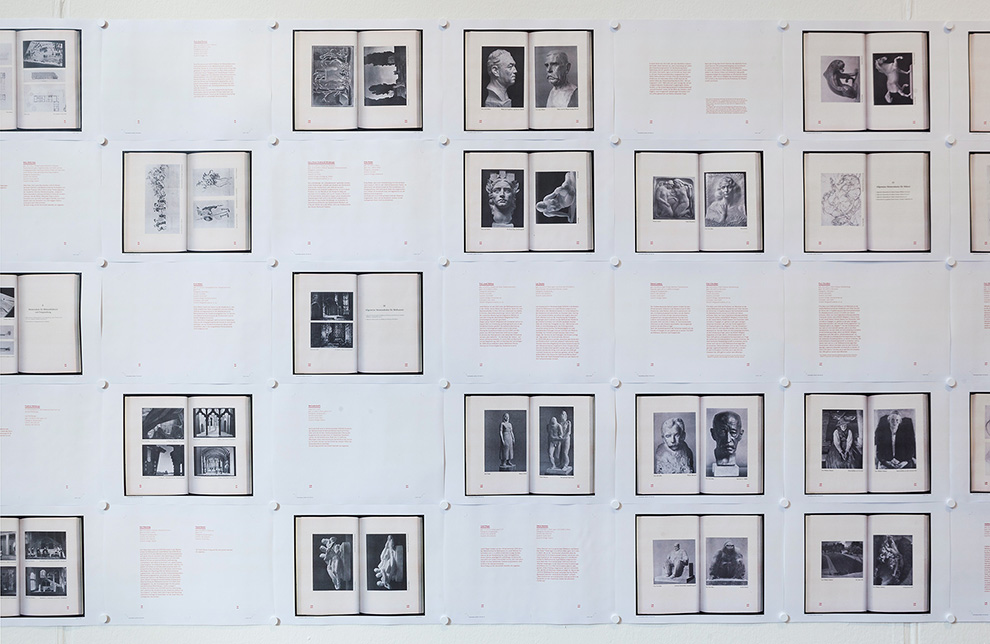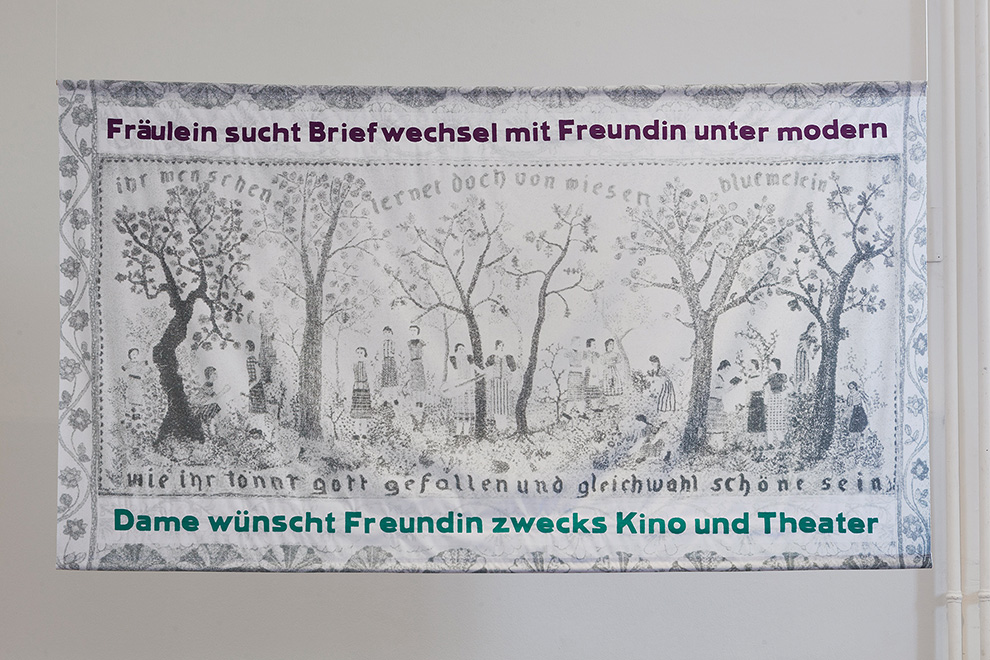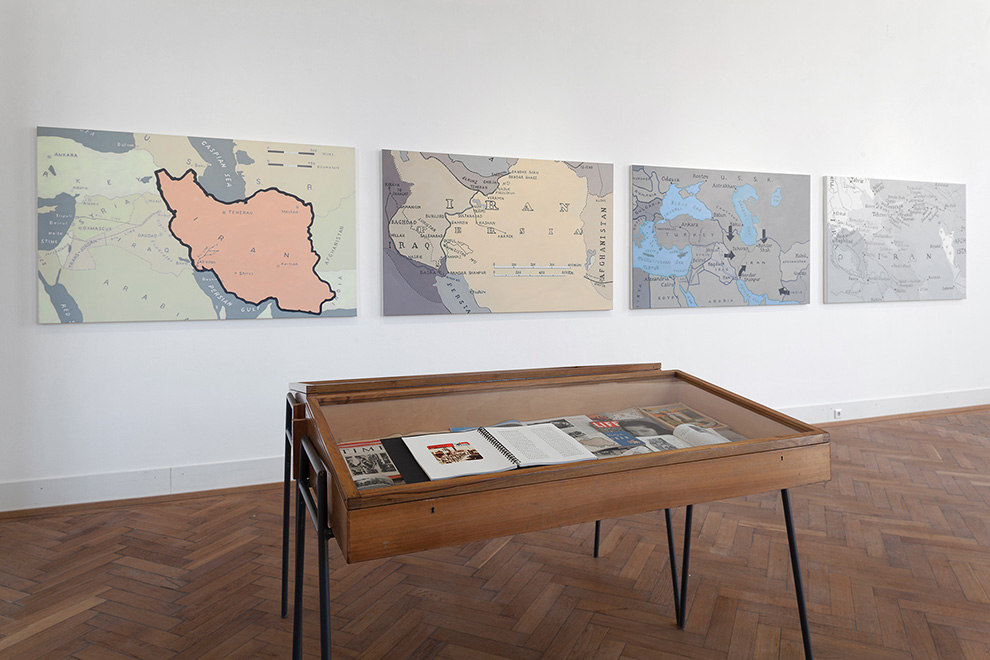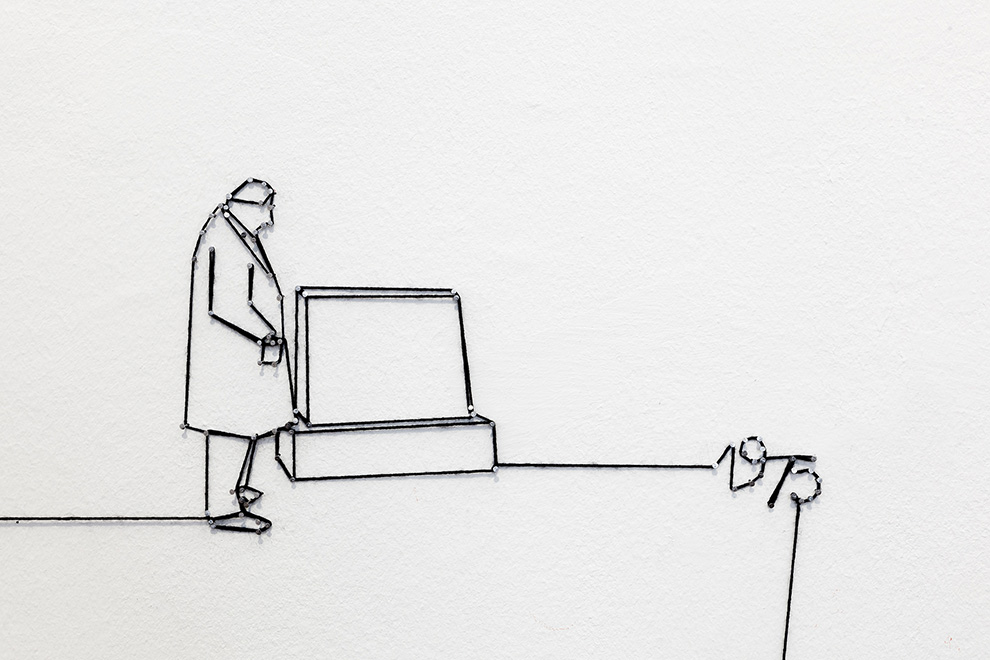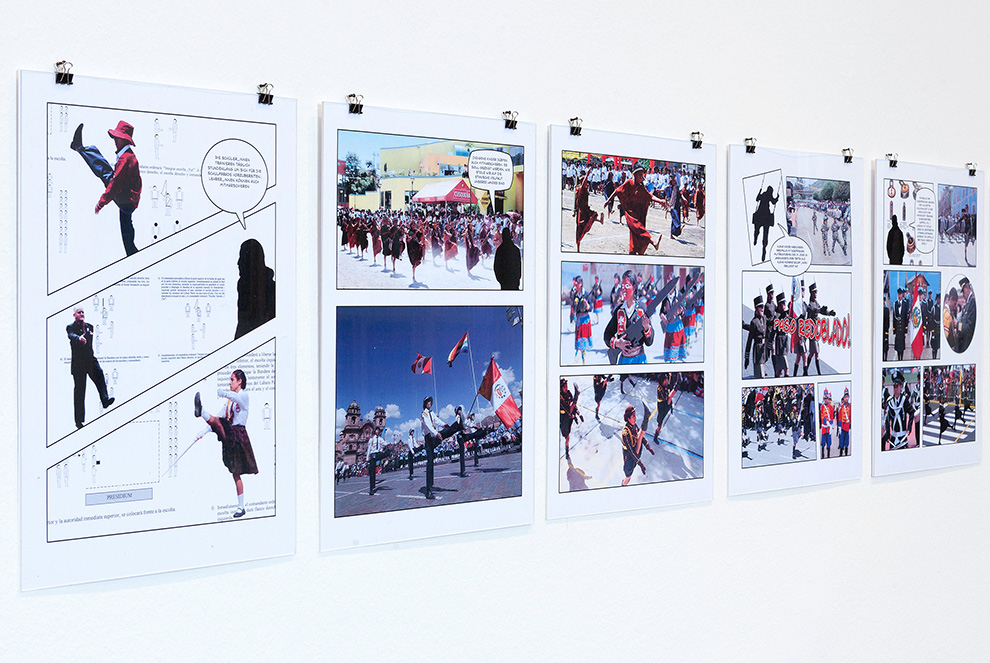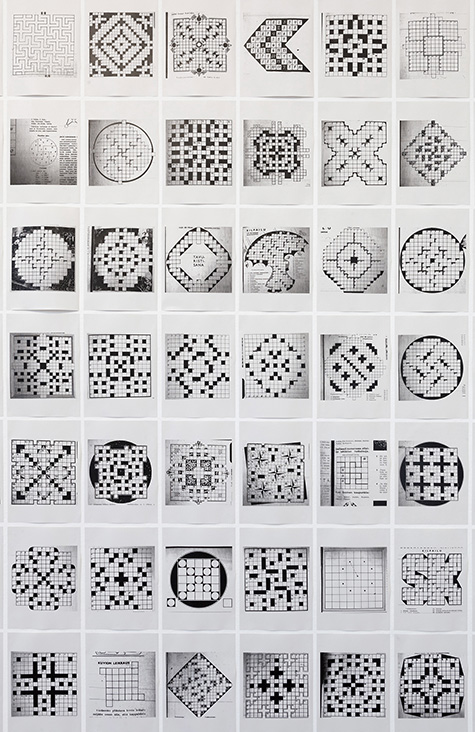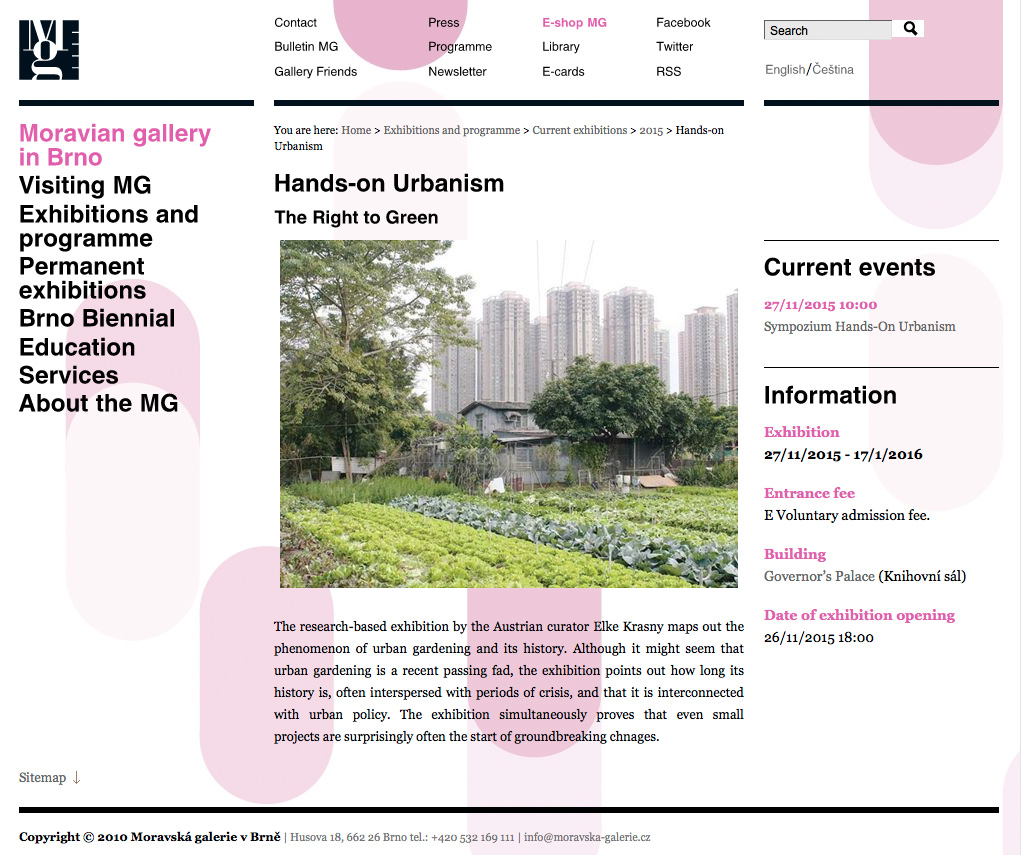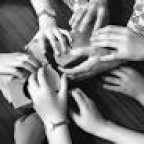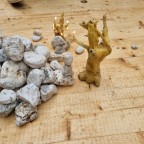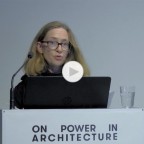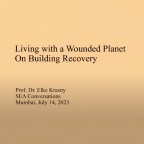Venue | Gallery, Toni-Areal, ZHdK Zurich University of the Arts,
Level 4 + 5, Pfingstweidstrasse 96
Time | March 21–April 13, 2015
Opening | March 20, 2015, 7 p.m.
Organized by Eleonora Stassi, a collective dinner commemorates Lacy’s International Dinner Party on the occasion of the exhibition opening.
Opening hours | Tuesday–Thursday, 3–6 p.m.
«The International Dinner Party» was a simultaneous worldwide dinner happening created by Lacy and Pruess to publicize networks of feminist and women’s development organizations around the globe on the eve of Judy Chicago’s «The Dinner Party» exhibition at the San Francisco Museum of Modern Art.The project with its over 2000 participants from all parts of the world, demonstrated the extent of feminist organizing in a pre-Internet era.
Taken together, the International Dinner Party’s messages constitute an instant archive of feminist practice and thought. The «Suzanne Lacy’s International Dinner Party in feminist curatorial thought» exhibition joins Lacy’s 1979 art project with four contemporary collectives: ‹Aktion Arkiv›, ‹Queering Yerevan›, ‹radical practices of collective care› and ‹Red Min(e)d›. These collectives use different artistic and curatorial methods to combine activism, feminism, friendship, transnational collaboration, and critically involved spatial practices. In different ways, these collectives produce emergent feminist and queer feminist archives.
Curated by Elke Krasny
Invitation PDF download
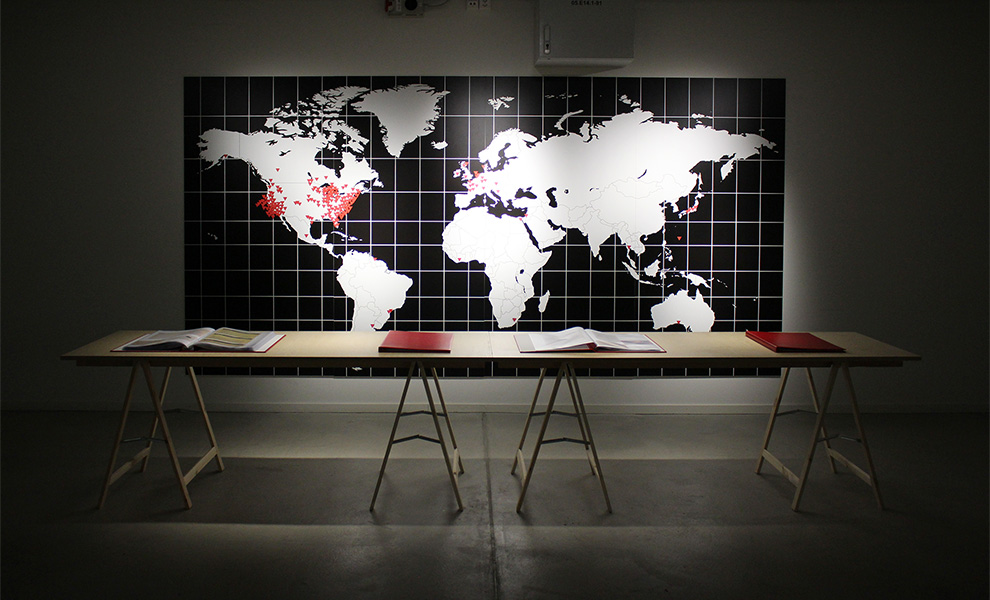
Installation view International Dinner Party by Suzanne Lacy and Linda Pruess (1979), Gallery, Toni-Areal, ZHdK Zurich University of the Arts, Zurich, 2015. .
On March 14, 1979, «a simultaneous world wide dinner happened on the eve of Judy Chicago’s Dinner Party exhibition at the San Francisco Museum of Modern Art. Suzanne Lacy together with Linda Pruess mailed thousands of postcards inviting women from around the world to participate in the art project. Over 2000 women responded. They were invited to host dinners on the same evening that would honor a woman in their own region (…) Because of time differences, the work constituted a 24-hour performance At each dinner women collectively drafted a statement and sent it via telegram to the San Francisco Museum of Modern Art, where the location of their dinner was marked by Lacy with a red inverted triangle on a twenty-foot wide black and white map of the world. The telegrams were displayed next to it. The project with its over 2000 participants from all parts of the world, demonstrated the extent of feminist organizing in a pre-Internet era.»
Taken together, the telegram messages constitute a world wide feminist archive of March 1979. The statements drafted by the women are an expression of international feminism. Their telegrams and letters reflect both specific local struggles and international networks of collaboration and exchange.

Installation view Aktion Arkiv, Gallery, Toni-Areal, ZHdK Zurich University of the Arts, Zurich, 2015.
«Aktion Arkiv (…) furthers participatory history writing. Unlike traditional archives, the association’s archive acts on site.» Helena Mattson, Meike Schalk and Sara Brolund de Carvalho initiated Aktion Arkiv, a not-for-profit association, in 2013. Starting from shared experiences of the restructuring of the Swedish model of the welfare state, the implementation of austerity measures, and the divide running through the contemporary immigrant Swedish society, they saw the need for a mobile archive.
Aktion Arkiv was invited by curator Maria Lind to contribute to the exhibition Tensta Museum: Reports from New Sweden on show at Tensta konsthall from October 2013 through May 2014. Tensta konsthall is located in a suburb of Stockholm that was built with the Swedish Million Program, an ambitious social housing program between 1965 and 1974. Today, many of the suburbs are identified negatively with the large late modernist housing ensembles and their mostly immigrant populations. Today, between 85-90% of the 19.000 residents of Tensta have immigrant background. For the exhibition Aktion Arkiv’s ambulant archive vehicle took off to Tensta. During the exhibition, the vehicle served for the exchange of information. It contained a library with books, photos, films, maps, a time line, a guest book, and archival material. It also housed a foldable table and seats, and functioned as a generator for discussion.»
Helena Mattson, Meike Schalk and Sara Brolund de Carvalho identified the year 1989 as a turning point, both globally and locally in Tensta. They connected the end of the cold war, the beginning neoliberalisation in Sweden, and the shift from labour migration to a global refugee migration with a 1989 international housing conference that had taken place in Tensta. Protagonists of the 1989 international housing renewal conference were invited to a witness seminar at the Tensta konsthall. It resulted in an intense dialogue and heated debates between the foreign guests and the public.
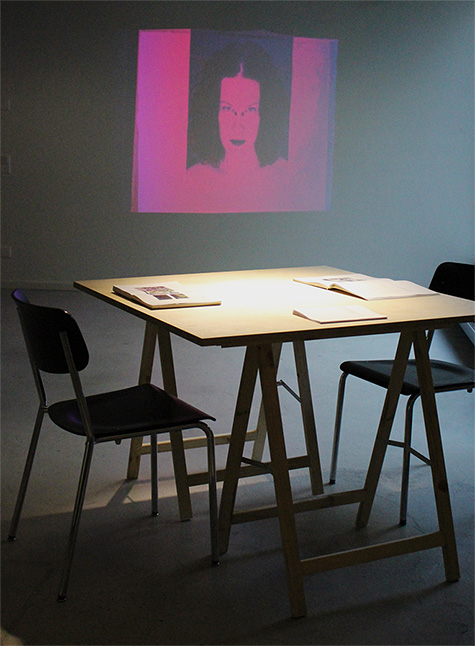
Installation view Queering Yerevan, Gallery, Toni-Areal, ZHdK Zurich University of the Arts, Zurich, 2015.
Queering Yerevan is self-described as «a collective of artists, writers, cultural critics and activists queering and using Yerevan as an experimental space.»
Starting from shared experiences of transitionality from the Union of Soviet Socialist Republics, USSR, to the Republic of Armenia marked by post-Soviet globalization, exchanges with the Armenian diaspora, conditions of prevailing homophobia and patriarchy and the influence of the Armenian Orthodox church, the Queering Yerevan originally active under the name WOW, Women Oriented Women, began to work in 2007.
In addition to their own artistic and theoretical work, the three core members Arpi Adamyan, Shushan Avagyan, and lusine talalyan organize and provide infrastructures for artistic production and public exchanges. They put together events, exhibitions, happenings, film screenings, workshops, find funding, crowdfound, run a blog, and publish books. In 2008, they opened the garden of Zarbuyan 34 in Yerevan to host exhibitions and performances. The garden was a gathering space for exchanges with other artists, activists, curators, theorists, and with a wider audience. The garden was the site of producing, performing, exhibiting, exchanging, reading, translating, discussing, and playing.
In their first published book Queered: What’s To Be Done With Xcentric Art they combineexperimental, poetic, and theory-based writing with the e-mail correspondence that both instituted and constituted the formation of the loose local and diasporic network of queer and feminist Armenian artists and intellectual producers active around the QY collective. Filled with debates, conflicts and emotions, it also makes public the work of funding and the complex processes around funding applications. Different formats of writing meet and mix. So do the languages and alphabets of Armenian and English. «A two-year conversation» amongst different Qeering Yerevan members that took place on a listserver via e-mails was also included. Therefore, the book functions as an open-ended archive.
For the exhibition «Suzanne Lacy’s International Dinner Party in contemporary feminist thought» Queering Yerevan contributes a new film based on the experiences of the three years of the garden of Zarbuyan 34. Making use of documentary videos shot during exhibitions, performances, discussions, lectures, and presentations, the film, like their book, can be understood as a site of experimentation and exchange. The film, like the book, constitutes a complex, open-ended, queer feminist archive.
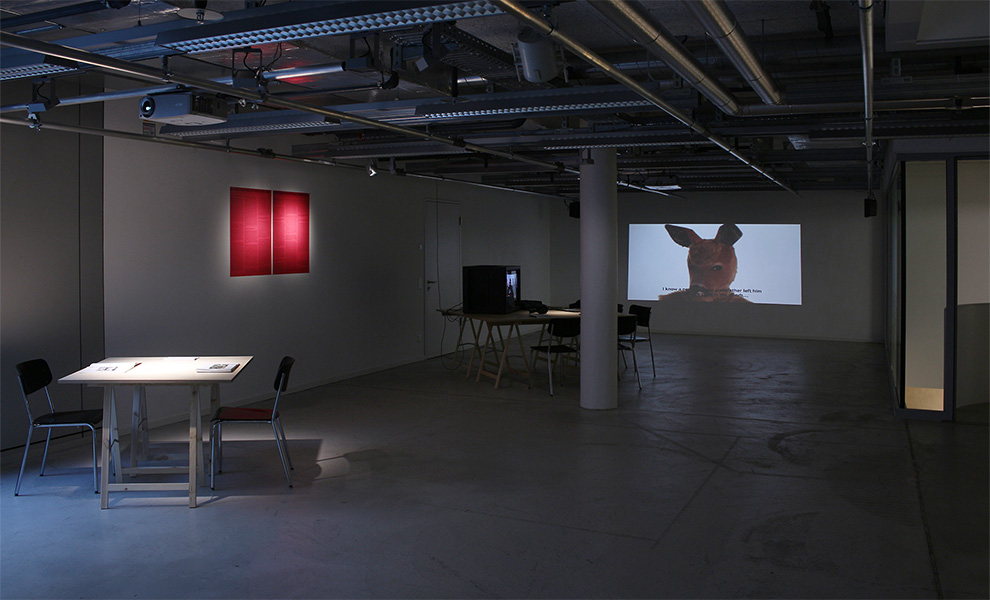
Installation view radical practices of collective care, Gallery, Toni-Areal, ZHdK Zurich University of the Arts, Zurich, 2015.
radical practices of collective care is self-described as a «collective research process investigating collective practices of care, reproduction and mutual aid as related to social movements.» It was initiated by Manuela Zechner, Julia Wieger and Bue Rübner Hansen in 2012. Starting from shared obsvervations «that the impact of the 2008 financial crisis could be felt strongly especially in Spain, Greece, Portugal and that austerity politics started to take effect, further dismantling the social institutions once provided by the (welfare)state throughout Europe» the three began their practice of a useful archive on «autonomous self-reproduction». Their collaborative work is based upon shared interests in «care, social reproduction/reproductive labor and, related to these questions, forms of organizing, food production and housing.» The first year their work was hosted and supported by the VBKÖ, the Austrian Association of Women Artists. The VBKÖ Vereinigung Bildender Künstlerinnen Österreichs was founded in 1910. Today, the VBKÖ exists as a space for fostering contemporary feminist artistic agendas, offering a space for experiments and promoting political and activist work, in order to establish a new and vital connection between historical debates and contemporary queer, feminist art production.
In 2014, following an invitation by Katharina Morawek and co-curator Manuela Zechner they conducted a workshop with Territorio Doméstico at the Shedhalle Zürich in the framework of the exhibition How we want to live. Madrid-based domestic worker’s group Territorio Doméstico, is a collective of mostly migrant women working in private homes. Territorio Doméstico has been a powerful voice in defending the rights of domestic workers and a key reference for creative and community-based methodologies of organising.
Their blog: http://radicalcollectivecare.blogspot.co.at is a growing and open-ended archive. Here, they share knowledge on «autonomous, collective practices that enable us to create alternative structure of care; alternatives to those options offered by the state and its capitalist logics that determine our daily lives; practices that allow us to imagine a different everyday, and offer us tools to escape the effects of austerity politics.» For the exhibition «Suzanne Lacy’s International Dinner Party in contemporary feminist thought» radical practices of collective care contributes a new text-based work offering a reflection of their practice. Responding to questions posed via e-mail by Elke Krasny, radical practices of collective care collectively authored About the Radical Collective Care Practices Project – an interview text. It is presented in the form of two posters using black type on a red ground.

Installation view Red Min(e)d, Gallery, Toni-Areal, ZHdK Zurich University of the Arts, Zurich, 2015.
Red Min(e)d is self-identified as a «feminist curatorial group» active with(in) and beyond the post-Yugoslav space. The four members are Jelena Petrović and Katja Kobolt, Danijela Dugandžić Živanović, and Dunja Kukovec. Starting from shared experiences of transitionality from the Socialist Federalist Republic of Yugoslavia to post-socialist globalization and based upon shared beliefs in curating feminist knowledge, friendship, and solidarity, the group started Red Min(e)d and their ongoing Living Archive project in 2011. The Living Archive produces and shares knowledge on the intersections of feminism and contemporary art in the post-Yugoslav context.
«We have been working on the basis of solidarity and consensus. We are four and we are constantly shifting power between us (…) we have been building a truly safe space of belonging. Living Archive editions took place in Zagreb, Vienna, Stockholm, Sarajevo, and Ljubljana.» The Living Archive is an exhibition laboratory and a public interactive archive with several (non)working stations such as: a Audio/Video booth that documents and presents live artists talks, discussions, and interviews, the Perpetuum Mobile with a growing collection of video and other media art, and the Reading Room where one can fill out the feminism and art Questionnaire, and since the Sarajevo edition there is also the Curatorial Forum.
«What we have known since the first edition of the Living Archive is that most artists, curators, and authors, just like each one of us, have no salaries, no health insurance, have no savings, have no studios, no security and no plans for future. They produce hungry, tired, love sick, home sick, lonely, with friends, using the equipment and skills of their friends and giving their lives, time and energy to produce art knowing that most of the people around them believe that art is just a commodity.»
In 2013, Red Min(e)d were nominated as October Salon curators. Initiated in 1960 by the City of Belgrade, the Salon is the oldest and most prestigious institution of contemporary visual art in Belgrade. «We searched for a public museum or a gallery in Belgrade that would be big enough to host over 40 artistic positions, have at its disposal an operating license to be able to welcome the public, be open and available in autumn and have heating and electricity in the whole building.» They found neither a museum nor a gallery. They decided that the 54th October Salon would take place in the former KLUZ department store and factory, originally built as a military salon, currently owned by Zepter. The exhibition No One Belongs Here More than You appropriated the precarious space of a so-called private-public partnership afforded within the conditions of neoliberal predatory capitalism. During the October Salon exhibition they made manifest «the labor of art and the labor of curating.»
For the exhibition «Suzanne Lacy’s International Dinner Party in contemporary feminist thought» Red Min(e)d contributes a new work demonstrating their curatorial methodology. Their contribution comprises the following elements: Perpetuum Mobile Screening Act of Instinct by Elin Magnusson, video documentations of the two Living Archive Forums, No One Belongs Here More Than You and Creating The Feminist Archive Means Facing The Real To The Most Extent, and a wall paper based upon Saša Krekoš original visual identity developed for the 54th October Salon: No One Belongs Here More Than You integrating quotes from The Living Archive Questionnaire.
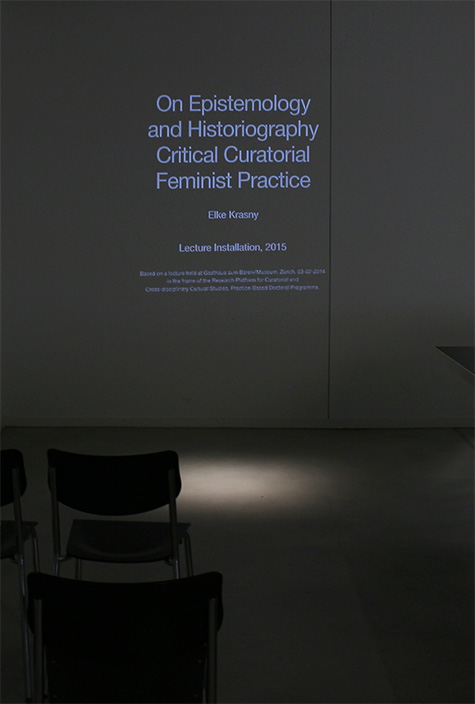
Installation view Lecture Installation. On Epistemology and Historiography. Critical Curatorial Feminist Practice. (2014) by Elke Krasny, Gallery, Toni-Areal, ZHdK Zurich University of the Arts, Zurich, 2015.
This lecture addresses epistemology and historiography with regard to a feminist historiography of curating, a history of feminist curating, and a feminist critique of the hegemonic history of curating.
The first part of the lecture constellates a number of key publications on feminist art history, feminist art theory, women’s history, and feminist political theory. Looked at together, the grouping of these publications allows an understanding for the changes and shifts with regard to key issues of concern for feminist scholarship. The publications chosen reflect a special interest in the politics of material conditions and artistic production in relationship to the politics of feminist appropriation, transgression, and transformation.
The second part of the lecture brings together a number of key exhibitions dedicated to women’s art and feminist art over a period of 99 years, beginning in 1910. The constellation clearly demonstrates a feminist curatorial project within curating’s history.
The third part of the lecture examines a number of key publications relevant to the emerging project of curating’s historiography. The mapping of these recent publications clearly demonstrates that there is one strand of curating’s historiography and another strand of curating’s feminist historiography. These two strands run in parallel, yet they rarely intersect or overlap. One could argue that the publications do in fact share the same past, yet they produce a very different historiographical account of this past. The past finds diverse uses in both feminist critique and feminist alliances.
The fourth part of the lecture describes and theorizes Suzanne Lacy’s «International Dinner Party» as a key moment in feminist curatorial thought. The «International Dinner Party» project links issues of feminist organizing, and networking with issues of the archive and future change.
This lecture was held in the frame of the Research Platform for Curatorial and Cross-disciplinary Cultural Studies, Practice-Based Doctoral Programme; A co-operation of the Department of Art at the University of Reading (UK) with the Postgraduate Programme in Curating at the Zurich University for the Arts, Institute Cultural Studies, Department Cultural Analysis (CH). Gasthaus zum Bären/ Museum, Zurich, March 7, 2014.
